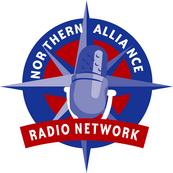Art is anything I can't do
I could take a bunch of cables and pipes, and tie them up into some jumble and call it art. I could paint a green square on a white canvas and call it art. But could I paint the ceiling of the Sistine Chapel? Never in a million years.
Recently, the artist Christo had a... well, something, in Central Park, called the Gates. He claimed it had no meaning, at least in form. And therein lies my visceral disgust with much of modern art.
Mind you, I like Jackson Pollack's work. But beyond that, there's not much I don't think should be left on the curb on sanitation pickup day.
Whatever happened to meaning in art? Isn't that the whole purpose of art?
For example, in Rembrandt's Mennonite Preacher, the meaning of the painting is seen in the use of light. The illuminated areas are the bible, the preacher's hands and face, and the woman. Other areas are darkened. This shows how the Word of God, the meaning of the Word of God, is transmitted through the minister's teaching and preaching to the woman.
Countless paintings in centuries past were done to instruct the viewer, either in some excerpt from classical literature, or in the Bible. Somewhere along the way we lost sight of the importance of meaning in art, of the power of the instruction that art can bring.
I am not moved by swaths of fabric fluttering in Central Park. I am moved by all that I've seen in the Louvre, the British Museum, the Vatican, the Pushkin Museum, the RijksMuseum. And I am content to live in those past centuries, thank you very much
Recently, the artist Christo had a... well, something, in Central Park, called the Gates. He claimed it had no meaning, at least in form. And therein lies my visceral disgust with much of modern art.
Mind you, I like Jackson Pollack's work. But beyond that, there's not much I don't think should be left on the curb on sanitation pickup day.
Whatever happened to meaning in art? Isn't that the whole purpose of art?
For example, in Rembrandt's Mennonite Preacher, the meaning of the painting is seen in the use of light. The illuminated areas are the bible, the preacher's hands and face, and the woman. Other areas are darkened. This shows how the Word of God, the meaning of the Word of God, is transmitted through the minister's teaching and preaching to the woman.
Countless paintings in centuries past were done to instruct the viewer, either in some excerpt from classical literature, or in the Bible. Somewhere along the way we lost sight of the importance of meaning in art, of the power of the instruction that art can bring.
I am not moved by swaths of fabric fluttering in Central Park. I am moved by all that I've seen in the Louvre, the British Museum, the Vatican, the Pushkin Museum, the RijksMuseum. And I am content to live in those past centuries, thank you very much








0 Comments:
Post a Comment
<< Home